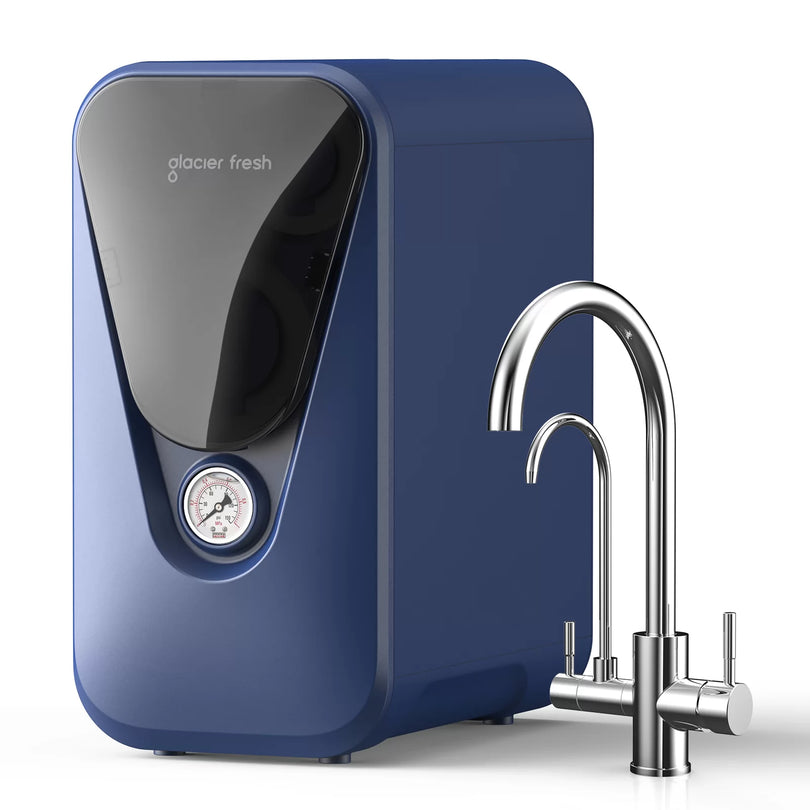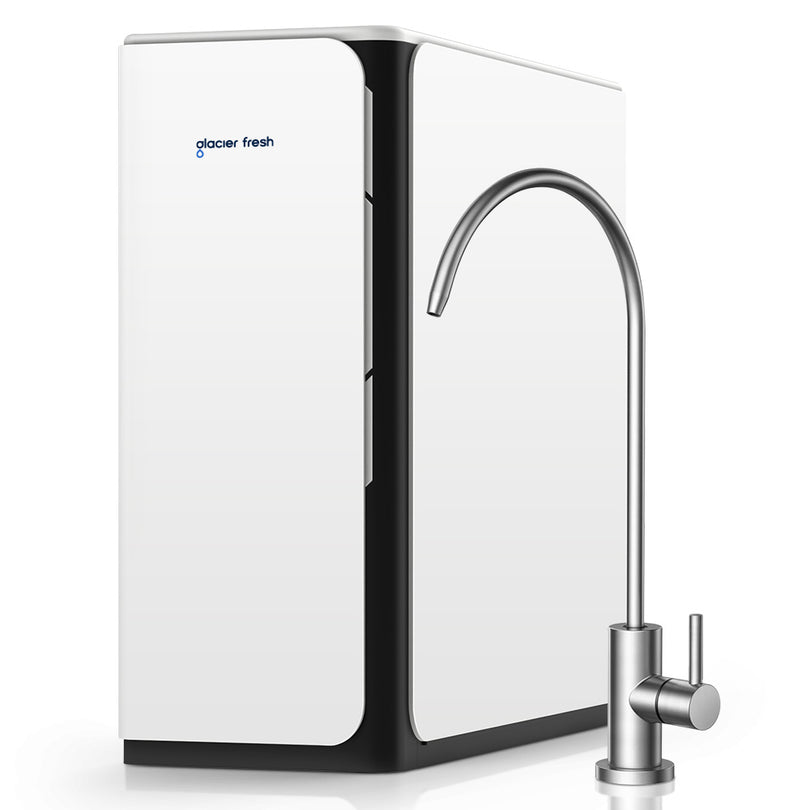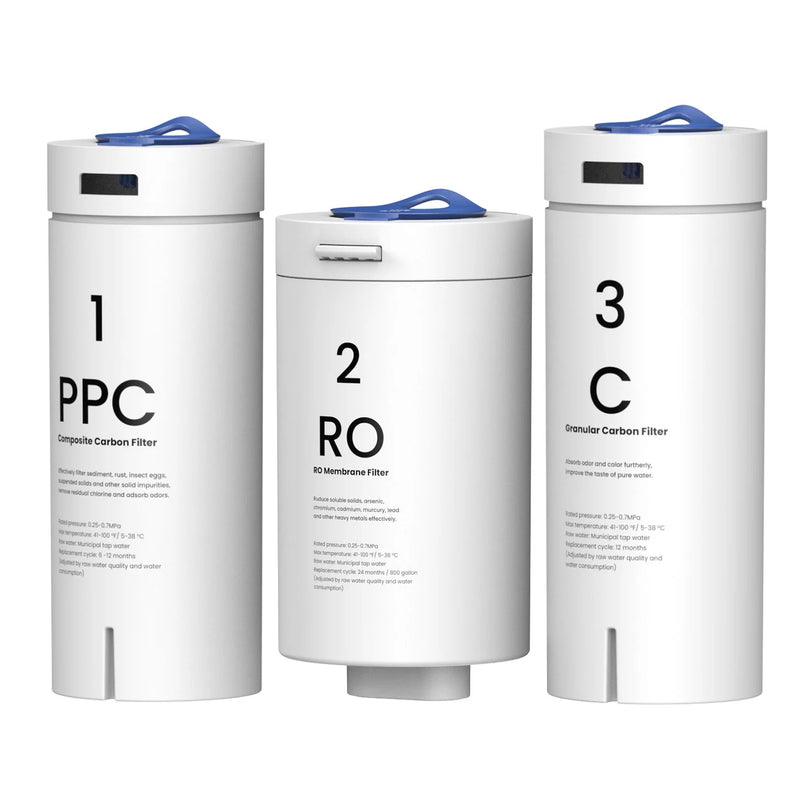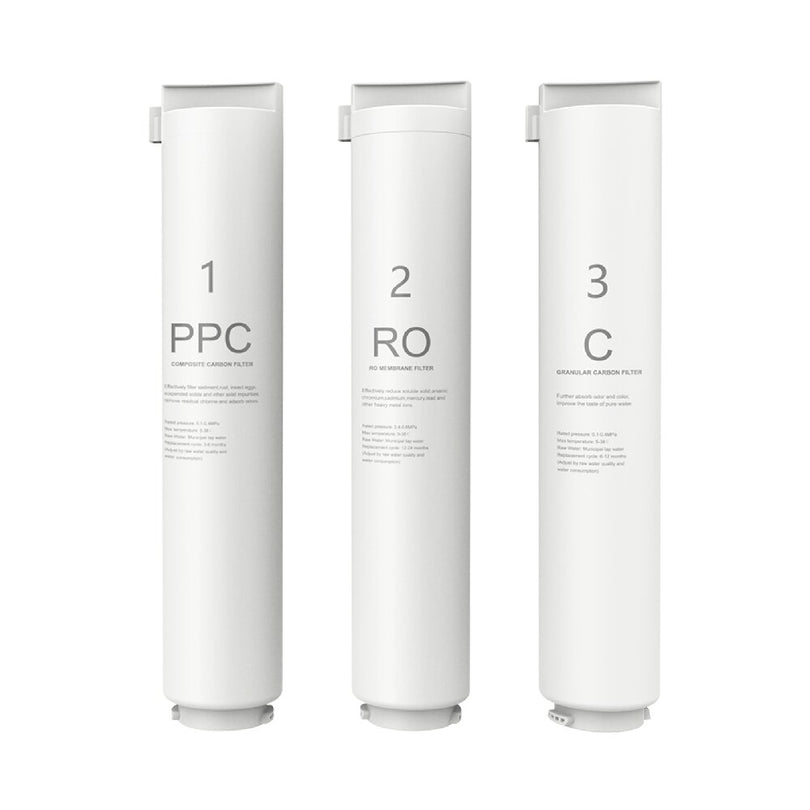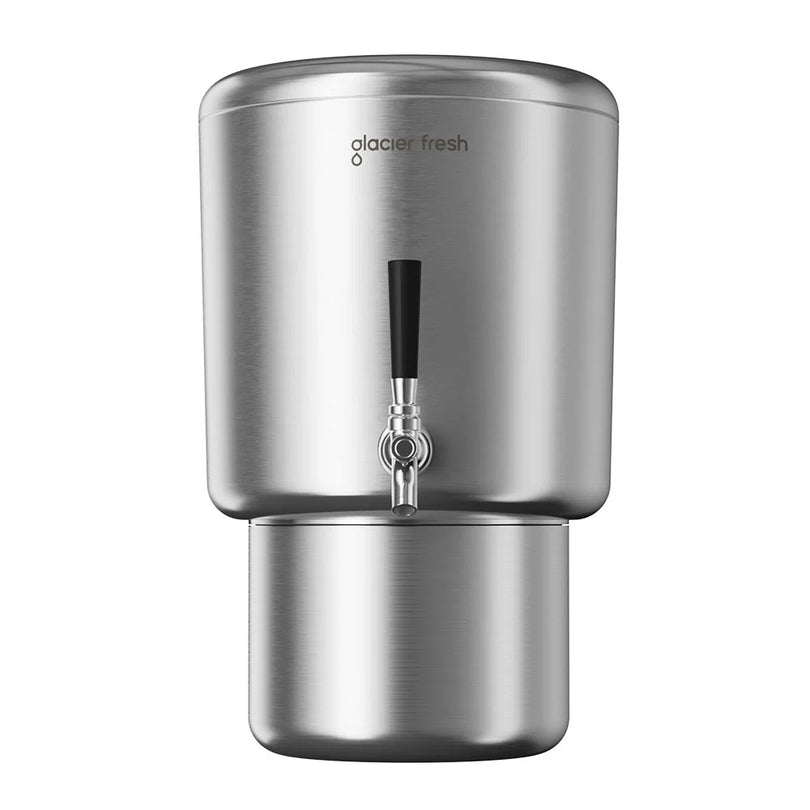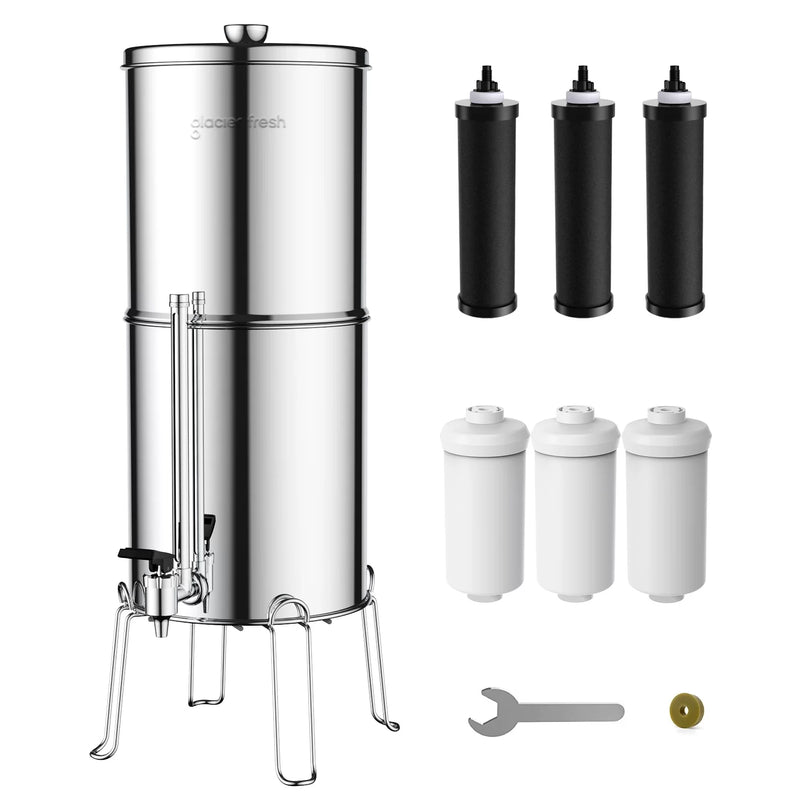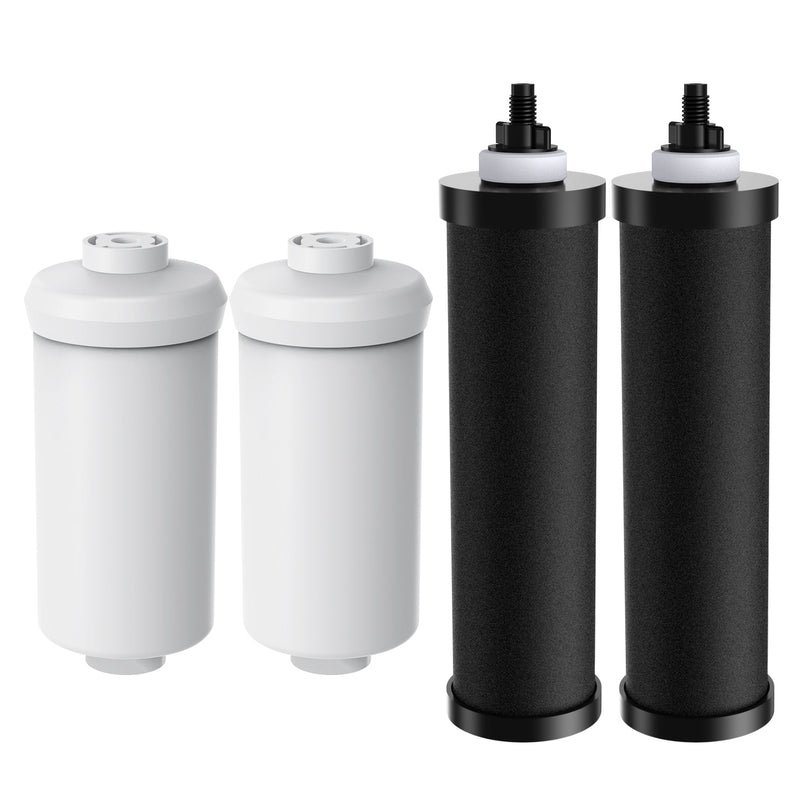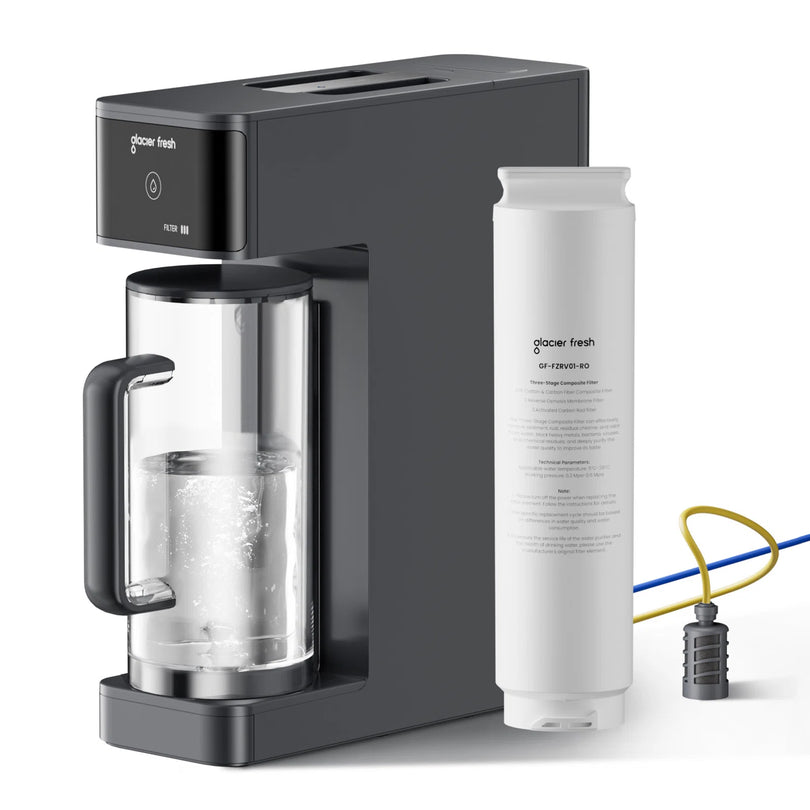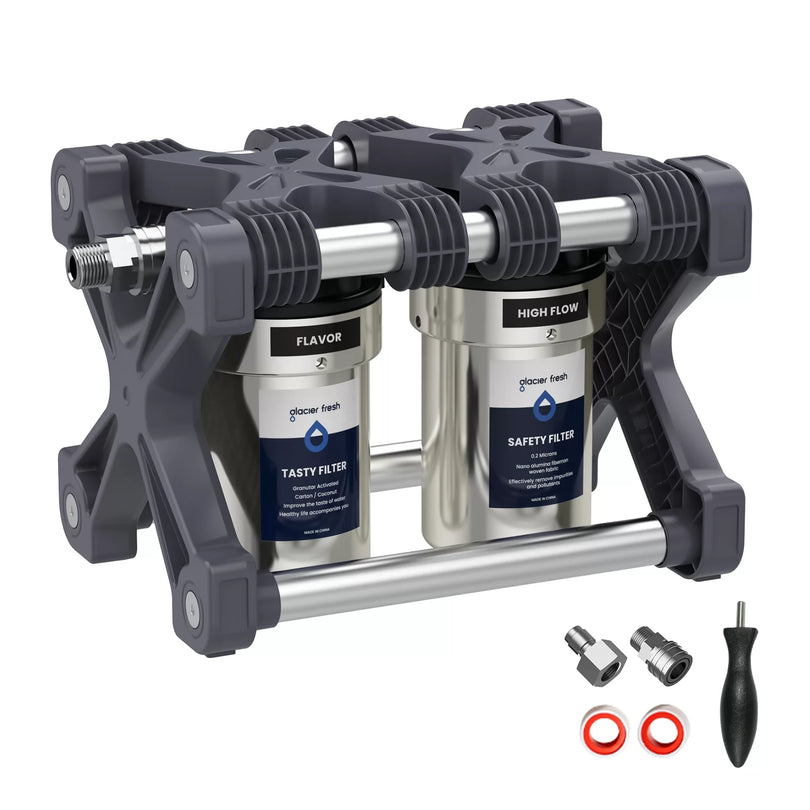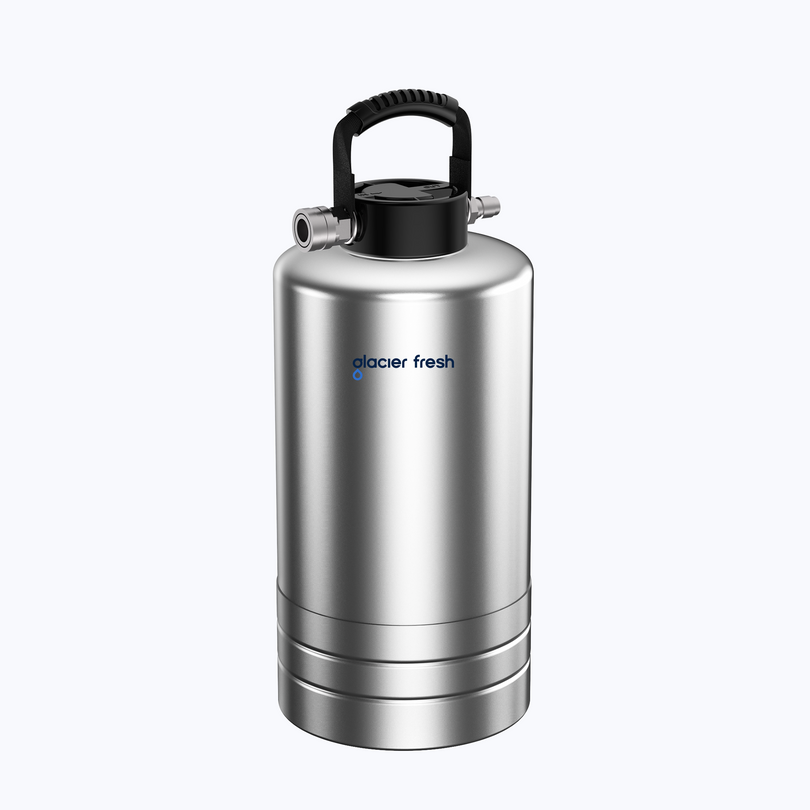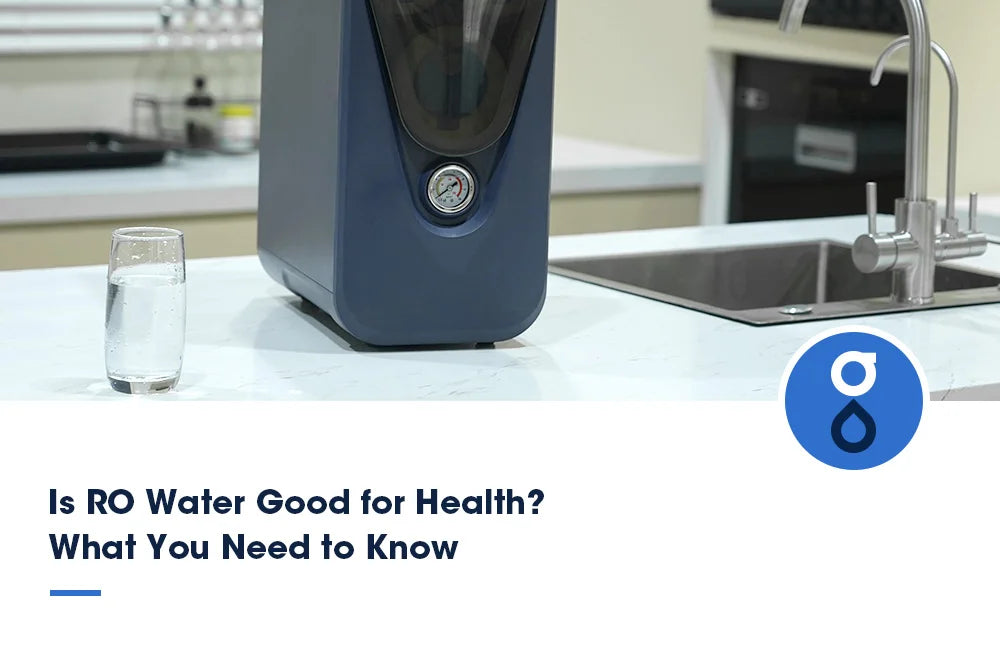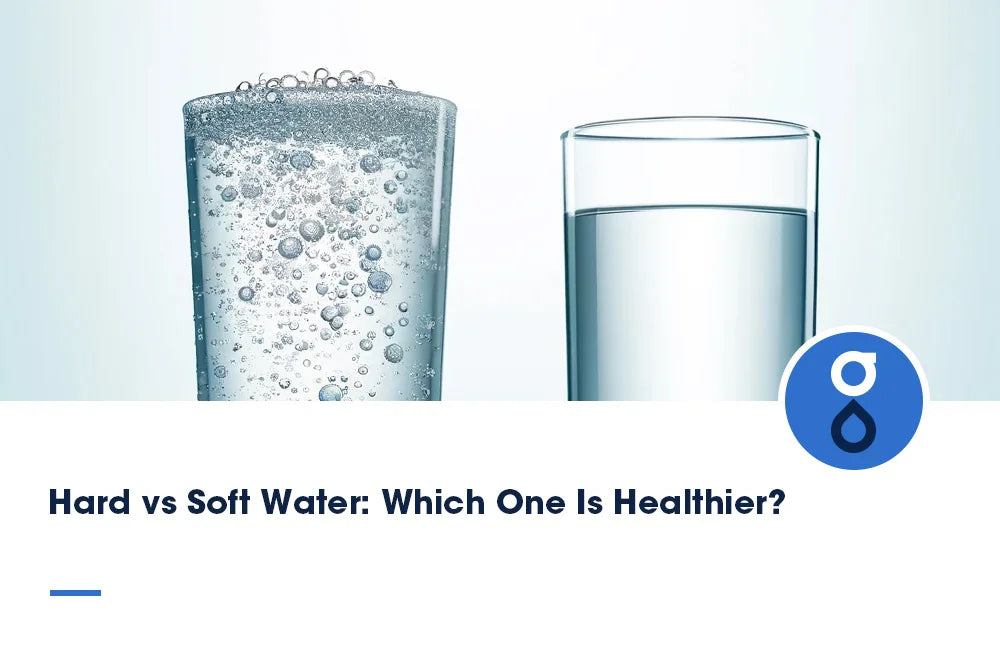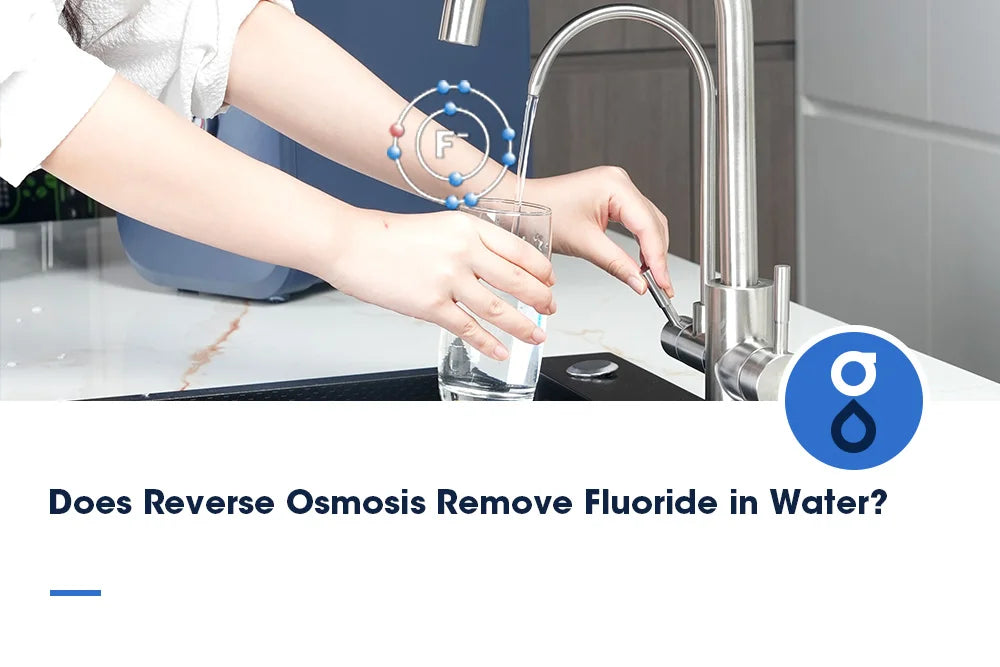Table of Contents:
What is RO Reverse Osmosis Water Purification?
Advantages of RO Water Purification
Who Is Reverse Osmosis Water More Suitable For?
Comparison Between RO Water Purification and Other Water Purification Methods
Potential Concerns of Drinking RO Water
How to Make RO Water Healthier
FAQs
Conclusion
Water is a fundamental need that must be safe and clean for all families. In recent years, reverse osmosis (RO) has earned its place as one of the most popular purification methods, but many people still wonder: Is RO water good for health?
In this article, we'll discuss what a RO water filter is, the advantages and disadvantages of it, and how to make it even healthier. We will also discuss recommended systems like the Glacierfresh U03 and Glacier Fresh RV Reverse Osmosis System that make a suitable solution for home and travel use.
What is RO Reverse Osmosis Water Purification?

The reverse osmosis water filter process utilizes a semi-permeable membrane to eliminate contaminants in water. RO filters can eliminate nearly 100% of pollutants, including heavy metals, nuclear material, pesticides, nitrates, FL, PFAS, viruses, and bacteria, unlike pure carbon filters (which can eliminate chlorine and sediment).
Advantages of RO Water Purification
RO water purification is a popular method for ensuring clean and safe drinking water. Here are some key advantages that make it a preferred choice for many households:
Removes up to 99.9% of impurities in the water, such as heavy metals, fluoride, chlorine, and microorganisms, to make the water safe to drink and cook.
Enhances taste and smell, bringing a more enjoyable drinking experience.
Reduces your home's bottled water use, saving money and reducing plastic impact.
We’ve selected the following two systems for both home and outdoor use.
For those looking to enjoy these benefits at home, an under-sink RO system is an ideal choice. The Glacierfresh U03 Under-Sink Reverse Osmosis System is one of the most advanced ones in the household. It features a 5-stage filtration system comprising PP-cotton, activated carbon, and a 16-layer RO membrane. This compact non-electric system fits easily under your sink, gives you up to 800 gallons of clean water per day, and is SGS/NSF certified. Its 3:1 pure vs. drain conservation ratio is also better than traditional RO for helping save wastewater.
For outdoor adventures, portable RO systems ensure safe drinking water wherever you go. The GlacierFresh RV Reverse Osmosis System is a storable reverse osmosis system that allows for portable purification when camping, needing to travel by RV, or in emergencies. It provides 12 ounces of clean water per minute, is BPA-free, and is easy to install without the need for plumbing knowledge.
Who Is Reverse Osmosis Water More Suitable For?
RO water is also superb in families with sensitive kids who just need pure hydration with no toxin exposure. Even the immunocompromised will find this type of water purification process good, as RO filtration is going to provide an added protection against any bacteria or viruses.
The fact that they are portable has made these models, like the GlacierFresh RV unit, very popular among individuals on the road, RV camping, or boating, as one is then able to safeguard themselves against drinking unsafe water found in haphazard or unpredictable water sources. Lastly, for use in homes where water is contaminated with nitrates, PFAS, and/or industrial contaminants, RO water is the most consistent water filtration solution to be used daily.
Comparison Between RO Water Purification and Other Water Purification Methods
Each water purification system will remove different contaminants. Some are flavor-boosters, some are germ-killers, but few offer the all-surface protection of reverse osmosis.
|
Method |
What It Removes |
Strengths |
Limitations |
|
Carbon Filters |
Chlorine, VOCs, odors |
Improves taste and smell; affordable |
Cannot remove dissolved solids, heavy metals, or microorganisms |
|
UV Filters |
Bacteria, viruses |
Disinfects water effectively |
Does not remove chemicals, heavy metals, or improve taste |
|
Distillation |
Most contaminants, minerals |
Produces very pure water |
Slow, energy-intensive, impractical for daily use |
|
Reverse Osmosis (RO) |
Up to 99.9% of contaminants, including heavy metals, fluoride, nitrates, PFAS, bacteria, and viruses |
Most comprehensive protection; improves taste; eco-friendly with modern models |
Removes some beneficial minerals; requires filter maintenance |
This makes RO the most comprehensive solution, suitable for use by both families and RV users alike.
Potential Concerns of Drinking RO Water

Though RO water is a great purification agent, there are some possible concerns.
Mineral Loss in RO Water
RO filtration not just eradicates bad stuff, but also cleans valuable minerals such as calcium and magnesium. This does not render the water unsafe, but some say that mineral loss may influence both taste and health in the long run. This can be countered with the mineralizing filters or by having a balanced diet free of deficiencies.
Installation and Space Requirements
Installing an RO water purifier usually requires basic plumbing connections and adequate space for the unit and its storage tank. It’s important to plan placement carefully to ensure easy access for maintenance and filter replacement.
Certain RO systems may be large or need complicated plumbing. But Glacierfresh U03 solves it by offering a compact tankless design that fits under the sink and thus saves space. It is available with Classic and Elite faucets; the latter can be installed without requiring drilling, which is why most households will find it easier to install.
The GlacierFresh RV Reverse Osmosis system is designed as a plug-and-play unit to be used as a portable unit. It can be hooked up to regular water pipes quickly, and the Elite model even includes its own power bank to be used off-grid.
Soft Taste and Personal Preference
The taste of RO water is frequently “softer” than the taste of spring water that contains many minerals. There are individuals who like this fresh taste, and there are others who like the natural minerals in water. This is mostly a matter of preference, and to regain some of the natural taste, remineralization filters may be used.
How to Make RO Water Healthier
Maximizing the health benefits of RO water can happen in a number of ways. Adding a filter to add essential minerals, such as calcium and magnesium, such of a remineralization filter, is the first option. Second, mix RO water with an equal volume of the diet, including mineral-enriched foods, to ensure the diet is fully balanced. Lastly, you also need to maintain filters regularly to be sure that no one interrupts the supply of pure and healthy water. A common question many people ask is how often to replace reverse osmosis filters—typically every 6 to 12 months for pre-filters, and every 1–2 years for RO membranes, depending on water quality and usage.
Both the GlacierFresh U03 and the GlacierFresh RV systems have easy filter change of filters, which are normally within 6 months under normal conditions, since the pre-filter and the comply 1-2 years in a higher performance RO membrane. Both systems have simple, stress-free maintenance.
FAQ
Is RO Water Good for Health?
Yes. RO water is safe and healthy to most people as it cleanses negative elements like lead, arsenic, and pathogens.
Does RO Water Lack Minerals?
Yes, RO also takes away useful minerals as well as the contaminants. Nonetheless, that is not what renders it harmful. To address minerals, many systems use remineralization or alkaline filters.
Can RO Water Be Used for Cooking?
Absolutely. The required water (RO) improves the taste of food and drinks by removing chlorine and contaminants.
Which RO System is Best for Homes?
The reason why the GlacierFresh U03 can best suit a family setup is that it is tankless, eco-friendly in water ratio, and not powered by electricity.
Which RO System is Best for Camping or RV Use?
The GlacierFresh RV Reverse Osmosis System is small and easily portable to be used during travel, camping, or emergencies.
Conclusion
So, is RO Water Good for Health and safe? Yes, RO water is the best choice to guarantee safe, clean, and delicious hydration, eliminating such harmful contaminants that other products frequently do. Although it lowers the mineral levels, this may be overcome by mineral supplementation or by way of diet.
At the domestic level, non-electrical systems such as the GlacierFresh U03 provide high-capacity filtration. In outdoor adventure, the GlacierFresh RV Reverse Osmosis System is highly sought after due to its portability and durability in wet and uncertain conditions. Summing up, RO water is a wise money investment in well-being and tranquility.

